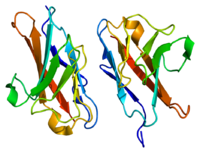
A novel splice site variant in CYP11A1 in trans with the p.E314K variant in a male patient with congenital adrenal insufficiency
Sign Up to like & getrecommendations! Published in 2017 at "Molecular Genetics & Genomic Medicine"
DOI: 10.1002/mgg3.322
Abstract: The CYP11A1 gene encodes the cytochrome P450 side‐chain cleavage enzyme, which is essential for steroid formation. Recessive variants in this gene can lead to impairment of sexual differentiation caused by a complete or partial loss… read more here.
Keywords: cyp11a1 trans; variant cyp11a1; cyp11a1; splice site ... See more keywords

A novel splice variant in EMC1 is associated with cerebellar atrophy, visual impairment, psychomotor retardation with epilepsy
Sign Up to like & getrecommendations! Published in 2018 at "Molecular Genetics & Genomic Medicine"
DOI: 10.1002/mgg3.352
Abstract: Several genes have been implicated in a highly variable presentation of developmental delay with psychomotor retardation. Mutations in EMC1 gene have recently been reported. Herein, we describe a proband born of a consanguineous marriage, who… read more here.
Keywords: epilepsy; psychomotor retardation; novel splice; psychomotor ... See more keywords

Identification of a novel splice site mutation in the SERAC1 gene responsible for the MEGDHEL syndrome†
Sign Up to like & getrecommendations! Published in 2019 at "Molecular Genetics & Genomic Medicine"
DOI: 10.1002/mgg3.815
Abstract: MEGDHEL is an autosomal recessive syndrome defined as 3‐MEthylGlutaconic aciduria (3‐MGA) with Deafness, Hepatopathy, Encephalopathy, and Leigh‐like syndrome on magnetic resonance imaging, due to mutations in the SERAC1 (Serine Active Site Containing 1) gene, which… read more here.
Keywords: site mutation; novel splice; splice site; site ... See more keywords

Identification and expression analysis of novel splice variants of the human carcinoembryonic antigen-related cell adhesion molecule 19 (CEACAM19) gene using a high-throughput sequencing approach.
Sign Up to like & getrecommendations! Published in 2020 at "Genomics"
DOI: 10.1016/j.ygeno.2020.06.043
Abstract: Alternative splicing is commonly involved in carcinogenesis, being highly implicated in differential expression of cancer-related genes. Recent studies have shown that the human CEACAM19 gene is overexpressed in malignant breast and ovarian tumors, possessing significant… read more here.
Keywords: ceacam19; ceacam19 gene; novel splice; expression ... See more keywords

Novel Splice-Site Mutation of KRT1 Underlies Diffuse Palmoplantar Keratoderma in a Large Chinese Pedigree.
Sign Up to like & getrecommendations! Published in 2018 at "Genetic testing and molecular biomarkers"
DOI: 10.1089/gtmb.2018.0154
Abstract: AIMS To identify potential causative gene mutations in a large Han Chinese pedigree with diffuse nonepidermolytic palmoplantar keratoderma (NEPPK). METHODS We enrolled 11 patients and 8 healthy individuals from a pedigree with NEPPK and 100… read more here.
Keywords: novel splice; chinese pedigree; palmoplantar keratoderma; krt1 ... See more keywords

A Novel Splice Variant of HYAL-4 Drives Malignant Transformation and Predicts Outcome in Patients with Bladder Cancer
Sign Up to like & getrecommendations! Published in 2020 at "Clinical Cancer Research"
DOI: 10.1158/1078-0432.ccr-19-2912
Abstract: Purpose: Poor prognosis of patients with muscle-invasive bladder cancer that often metastasizes drives the need for discovery of molecular determinants of bladder cancer progression. Chondroitin sulfate proteoglycans, including CD44, regulate cancer progression; however, the identity… read more here.
Keywords: outcome patients; bladder cancer; splice variant; cancer ... See more keywords

A novel splice-site variant of the LAMB3 gene is associated with junctional epidermolysis bullosa
Sign Up to like & getrecommendations! Published in 2022 at "European Journal of Dermatology"
DOI: 10.1684/ejd.2022.4318
Abstract: Junctional epidermolysis bullosa (JEB) is a rare inherited genetic disorder in which pathogenic mutations are mostly located within exons of the associated genes. This report describes a novel variant located at a splice site. To… read more here.
Keywords: novel splice; gene; epidermolysis bullosa; junctional epidermolysis ... See more keywords